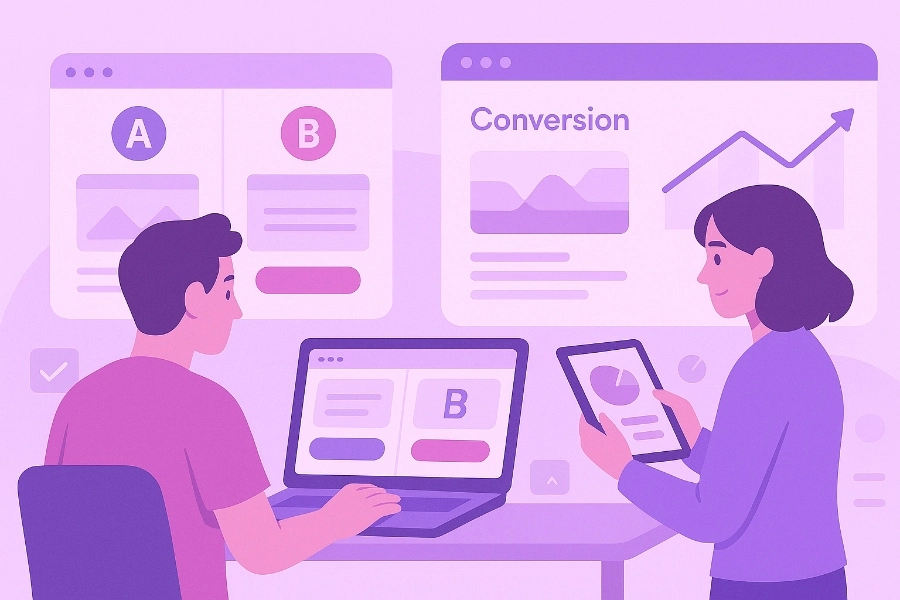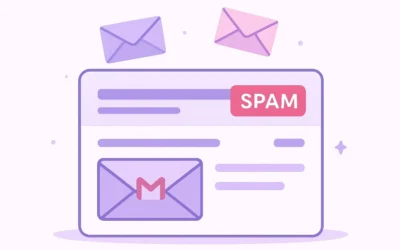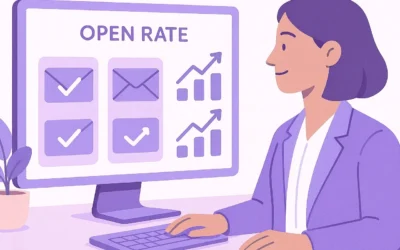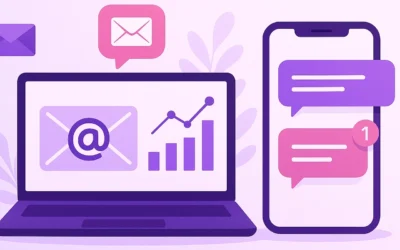Landing pages are fundamental tools in any digital marketing strategy. Specifically designed to convert visitors into leads, these pages stand out for their focus on specific objectives, such as collecting contact information or closing sales. When properly designed, they can make a significant difference in the conversion rates of any campaign. But what makes a landing page truly effective? Here, we explore the essential elements you need to implement to maximize your results.
What Is a Landing Page and Why Is It Key to Capturing Clients?
A good digital strategy doesn’t just focus on generating traffic; it must also focus on converting that traffic into measurable results. This is where landing pages come in, as key pieces that act as the final link between generated interest and the final conversion. Thanks to their focused, distraction-free design, they guide users toward a specific action, maximizing the efficiency of campaigns. Implementing them correctly can significantly enhance your marketing performance.
Before diving into their differences from other pages, it’s important to understand what they are and why they’re so effective in a conversion funnel.
Landing Pages to Capture Leads
Landing pages are designed with a specific objective: to capture the user’s attention and convert it into a measurable action, such as a subscription, a download, or a purchase. They are an essential tool in any digital acquisition strategy, as they allow all design and message elements to be focused on a single goal. This makes campaigns that use personalized landing pages significantly more effective than those that simply redirect to the site’s homepage. Moreover, by aligning with the user’s intent, they improve both the experience and the efficiency of the conversion funnel.
Differences Between a Landing Page and a Website
While a website typically has multiple sections and objectives, landing pages are optimized to guide users toward a single specific action. This singular focus makes them ideal for email marketing campaigns, Google Ads, or any strategy requiring direct lead capture. Companies that combine well-designed landing pages with SEO content strategies increase their organic visibility and the effectiveness of their digital campaigns. Additionally, professional web development can make the difference between a page that converts and one that doesn’t. Having a clear structure, visual hierarchy, and focused content significantly improves the performance of any lead generation strategy.
Essential Elements of an Effective Landing Page
A well-designed landing page is not a matter of chance. Every component must be carefully structured to capture the user’s attention and guide them toward conversion. From the first second, each visual and textual element must be focused on achieving a specific action. The balance between functionality and aesthetics is key, achievable only through strategic planning and user-centered design.
Clear and Engaging Headline That Connects With the User
The headline is the first thing users see when landing on your page. It’s crucial that it be clear, direct, and focused on the benefits you offer. For example, if you’re promoting a marketing webinar, the headline could be: “Learn the strategies that will boost your conversions in record time.” A well-crafted title sparks curiosity and motivates users to keep exploring. It should also align with the rest of the content and offer coherence from the first glance. Testing different versions is also recommended to find what resonates best with your audience.
Strong, Well-Placed Call to Action (CTA)
The CTA is the engine of any landing page. Phrases like “Download Now” or “Start Free Today” should be short, impactful, and strategically placed. Additionally, the CTA button should stand out visually to immediately grab attention. The color, typography, and size of the button should be carefully selected so it doesn’t go unnoticed. It’s also important to repeat the CTA throughout the page, especially after key sections that explain your value proposition, reinforcing the call to action without being intrusive.
Clean, Minimalist Design to Improve User Experience
A cluttered or confusing design can drive visitors away. Simplicity not only enhances aesthetics but also facilitates navigation and increases the chances of conversion. Automated email marketing campaigns are often complemented by well-designed landing pages, ensuring a smooth user experience from email to conversion. This is where strategic web development plays a key role in ensuring a cohesive and professional experience. Proper use of white space, visual hierarchy, and a clear structure can make your landing page feel much more intuitive.
Images or Videos That Reinforce the Offer
Visual content can greatly increase the effectiveness of your message. High-quality images or short videos that explain your value proposition are key elements for capturing attention and building trust. Using visuals that complement the text and highlight benefits can make a big difference in how your offer is perceived. Make sure all visual content aligns with your brand identity, maintains professional quality, and doesn’t slow down page load speed, as that can negatively affect conversions.
Simple, Optimized Capture Form
Forms should be as simple as possible. Requesting only essential information, such as name and email, can increase the number of leads captured. If you include additional fields, ensure they add value and don’t complicate the process. Also, keeping the form visible and accessible from any point on the landing page facilitates conversion. Including elements like a privacy label, a thank-you message, or automatic field validation can also enhance the user experience.
Maximizing Conversions
Designing an effective landing page is just the first step; the real key is continually improving its performance. Ongoing optimization based on real data and user behavior is essential to maximize the long-term conversion rate. Implementing small improvements consistently can lead to huge differences in final results.
Presenting the Offer in an Irresistible Way
Your value proposition must be clear and persuasive. Include specific benefits and avoid focusing only on features. If you’re offering a discount, emphasize the savings users will get by taking advantage of it. Showing real examples of what they’ll receive, including testimonials or statistics, can also strengthen perceived value. The more tangible the perceived benefit, the easier it will be for the user to take action.
Avoiding Distractions and Maintaining Conversion Focus
Eliminating links or menus that can divert attention is crucial. Google Ads campaigns that drive traffic to simple, distraction-free landing pages tend to have higher conversion rates because they keep users focused on the desired action. The entire visual and textual structure should guide toward a single action: conversion. This is achieved with clean design, direct messaging, and clear hierarchy in visual elements.
A/B Testing and Continuous Optimization
Once your landing page is live, the work of analysis and improvement begins. There’s no single formula for success, so testing different versions of key elements helps you better understand your audience and make informed decisions based on real data. A/B testing is a powerful tool to achieve this.

Improving Conversions With A/B Testing
Testing variations of your landing pages will help you discover which elements work best. Changing a title, button color, or form position can significantly impact your results. Make sure to measure each experiment precisely and run tests with enough traffic to obtain statistically significant results. Over time, these small adjustments can lead to considerable conversion increases.
Adjusting Content to Convert
The data from A/B testing lets you continuously refine your message, design, and strategy. Implementing data-driven improvements ensures your page evolves and maintains its effectiveness. Also analyze user behavior through heatmaps, session recordings, and bounce rates. This provides a more complete view, allowing you to adjust not only the content but also the structure and browsing experience.
Mobile Optimization
Today, a significant portion of traffic comes from mobile devices. That’s why an effective landing page must adapt perfectly to any screen, ensuring a flawless user experience from mobile to desktop. Ignoring this aspect can cost you a substantial number of conversions.
Responsive Design Is Essential
With the rise of mobile users, responsive design is no longer optional. A landing page must look and function perfectly on any device to ensure a seamless user experience. This includes readable font sizes, thumb-accessible buttons, and a layout that doesn’t require zooming or horizontal scrolling. Also, test on various browsers and resolutions to ensure full compatibility.
Improving the Mobile Experience
In addition to design, optimizing speed and eliminating unnecessary elements in the mobile version is key to maintaining user attention and encouraging conversions. Reduce the use of heavy scripts, compress images, and simplify content without losing clarity. Every second counts, and on mobile, users quickly abandon if something doesn’t work as expected.
Importance of Load Speed
Load speed directly affects user experience and key conversion metrics. A slow page not only drives away visitors but also affects search engine rankings. Ensuring your landing page loads quickly should be a priority from the development phase.
Faster = Higher Conversion Rate
Load speed directly affects user experience and, consequently, conversions. A page that takes more than 3 seconds to load can lose up to 50% of visitors. This represents not only lost business opportunities but also poorly utilized investment in advertising campaigns. Implementing best practices from server setup to visual content optimization is key to maintaining optimal performance.
Tools to Measure and Improve Load Speed
Use tools like Google PageSpeed Insights to identify issues and optimize speed. Making adjustments in hosting—such as those offered by VPS servers—can make a big difference by reducing load times. You can also consider specialized optimized web development services that include structural improvements, compression techniques, lazy loading, and best practices that enhance your site’s technical performance.
______________________________
Optimize your landing page design and start capturing more leads. Request a free audit and we’ll help you.



0 Comments